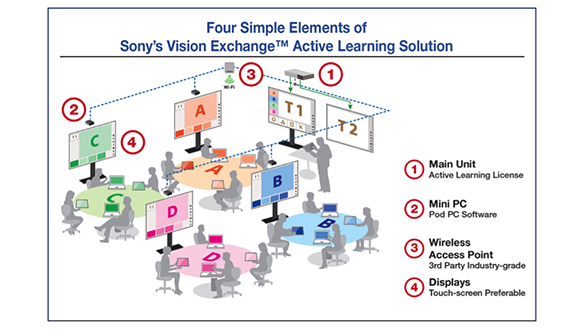

If you approach a corporate customer with a new collaboration technology solution that’s sure to save time and money, improve meeting and collaboration experiences, and increase productivity, they’ll be all ears.
However, your customers within institutions of higher education are likely to be sensitive when it comes to the quality of education they already provide. Before you call your college or university customer to pitch a technology that will improve student outcomes and change the way instructors teach, slow down. It’s important to understand that pedagogy is paramount, and technology only supports different teaching styles, not the other way around—ever.
The editors of AV Technology Magazine have been down this path for you. We’ve interviewed many university instructional technologists and AV/IT managers, and we’ve provided some background and terms below that will helpful to read before you make the call. It’s important to do some homework before approaching these customers.
Sage on the Stage
The practice of active learning has been around for nearly twenty years—long before current technology entered the picture. All of your higher education customers will be aware of active learning pedagogies. Since the mid-1990s, foundational research from North Carolina State University, the Massachusetts Institute of Technology (MIT), and other institutions for higher education has been showing that active learning classrooms (ALCs) help increase student engagement and lead to positive outcomes.
See: 10 Key Elements of an Active Learning Classroom
These active learning pedagogies are rapidly replacing the traditional teaching styles that are sometimes referred to as “sage on the stage.” This can be accomplished simply by rearranging the classroom furniture from the lecture-style format and setting up a series of collaborative group tables.
In recent years, new technologies have been developed to help support and enhance the learning experience, connecting instructors and students and enabling them to engage at an even deeper level through sharing and collaborating on content across multiple classrooms. And very recently, active learning technology solutions that are easy to install, configure, and support, and that also provide training, have appeared.
Terms and Resource Cheat Sheet
Active Learning Classrooms (ALCs) are defined as “student-centered, interactive, integrated, flexible, active learning spaces” (University of Minnesota, 2009). These spaces can take many forms, but typical ALCs include:
- Movable chairs and tables or tables configured into groupings (often referred to as pods)
- Multiple projection/viewing systems
- Multiple whiteboards/writing surfaces.
The furniture and technology are designed to enable students to work in small groups and to enable instructors to work more interactively with students during class activities.
FLEXspace.org(the FLEXspace Flexible Learning Environments eXchange) is a vast searchable online repository of learning space designs, images, data, and best practices contributed by institutions. FLEXspace has a worldwide community of over 2,700 users from over 1,200 institutions in 40 countries.
Flipped Learning is a pedagogical approach in which direct instruction moves from the group learning space to the individual learning space, and the resulting group space is transformed into a dynamic, interactive learning environment where the educator guides students as they apply concepts and engage creatively in the subject matter.
Pedagogy (ped·a·go·gy) is defined as the art, science, or profession of teaching. It is the method and practice of teaching, especially as an academic subject or theoretical concept. This is an important term to know, as it’s often used in education when talking about different styles of teaching. The pedagogy is first and foremost in education, and technology only supports pedagogy. Don’t make the mistake of saying the technology will improve pedagogy!
TEAL (Technology Enabled Active Learning) is a pedagogical innovation established in a technology-enhanced multimedia studio that emphasizes constructivist-oriented teaching and learning developed at the Massachusetts Institute of Technology (MIT).
SCALE-UP (Student-Centered Active Learning Environment for Undergraduate Programs) is an initiative based at North Carolina State University. SCALE-UP has inspired active learning development at scores of universities.
STEM: Science, technology, engineering, and mathematics.

This is the first in a six part blog series wherein I will focus in on the bleeding edge of active learning in higher ed today. Read my next post here: The Easiest Sale.

